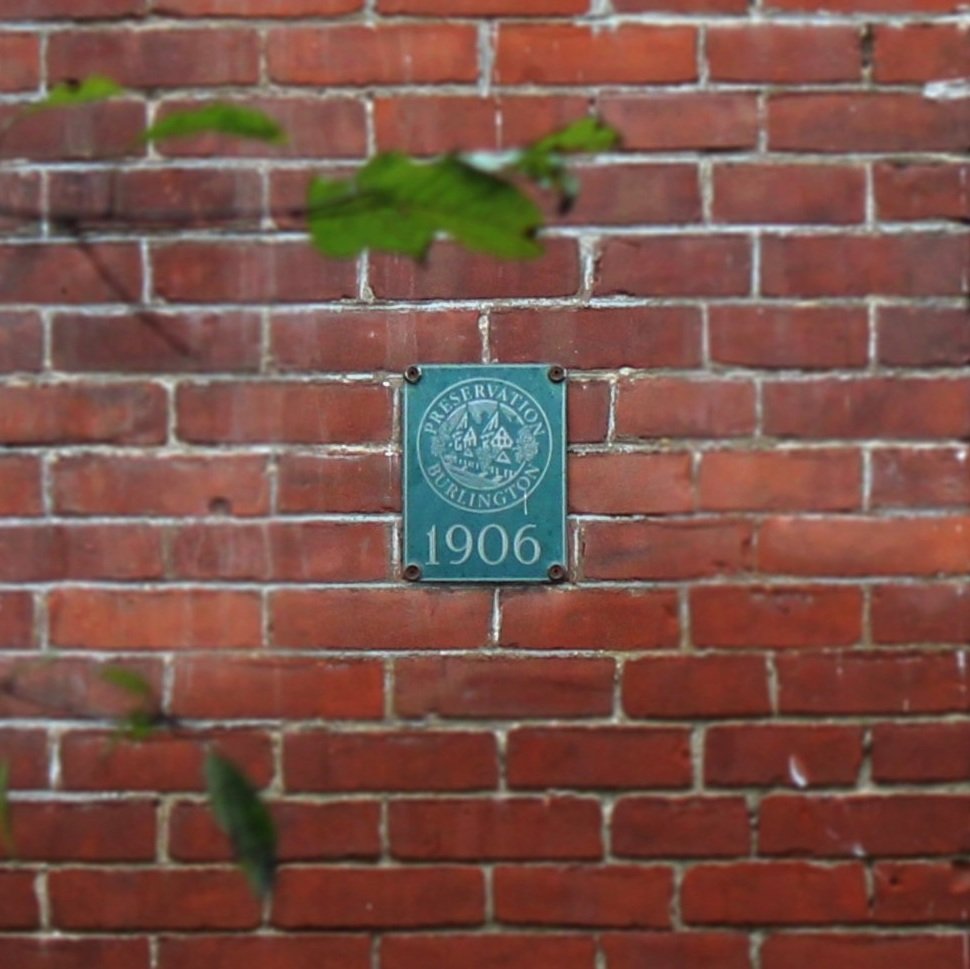Historic Marker
Program
Showcase your property’s history with one of our distinctive Historic Markers. We’ll even do the research for you! Total cost is $125 for the marker and history of house.
A few of Burlington’s
Historic Properties
275 APPLETREE POINT ROAD
Built 1930
Appletree Point saw the very beginning of colonial settlement in Burlington in 1773, when Felix Powell came from Dorset, cleared a five-acre piece of land on the Point, and built a log cabin. It wasn’t until October of the next year that he bought the land from Samuel Averill of Litchfield, CT. In 1776 when the war started, the area was no longer safe, so the settlers headed south. Powell sold his land, fought in the Revolution, and never returned to Burlington.
The land passed through several families in the 19th century without anyone actually farming it and served as a wood lot for the troops stationed in Burlington during the War of 1812.
In the 20th century, Urban A. Woodbury II, a member of one of Burlington’s most prominent families, was determined to establish a scientifically-based farm for breeding Guernsey cattle on 225 acres of land (the entire Point, extending to North Avenue). In this, he had great success, until a disastrous barn fire in 1925 destroyed his herd. He bought more stock, but the farm never recovered.
291 SOUTH UNION STREET
Built 1906
This two-story brick veneer Colonial Revival house was an early design of Burlington architect Frank Lyman Austin (1874-1942), whose other creations include the old Champlain School, Memorial Auditorium, the YMCA, Edmunds School, the Central Fire station, and many other public buildings and homes around the state.
The house features a hipped slate roof, tall narrow chimneys, and an angled brick and clapboard bay on the south side. The windows have the three to four vertical light upper sash seen in many Burlington houses of this period. Especially interesting is the recessed entrance with a Federal Revival doorway.
158 NORTH WILLARD ST
Built 1920
158 North Willard Street is a good example of the solid middle-class housing that grew up in the north end of the city during the last quarter of the 19th century and the first part of the 20th. It was built in the early 1920s as the home of the Lisman family, remaining so for over 50 years. Next, it became a rental property, housing first a rabbi’s family and then UVM students. For a period in the 1990s, it was known as Oxford House, a home for recovering drug addicts and alcoholics.
Samuel Lisman, the first owner, was a prominent member of the Jewish community featured in the Burlington-based documentary “Little Jerusalem”. The early members of the community settled in the neighborhood of their synagogue, then at the corner of Archibald and Hyde Streets, a short distance from the Lisman house.
This early 20th-century house is a worthy example of the many varied homes that make up Burlington’s neighborhoods.
House profiles featured are comprised of publicly available data








